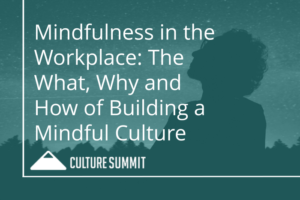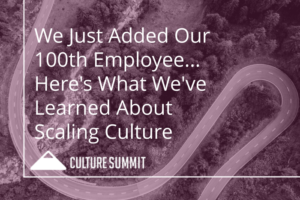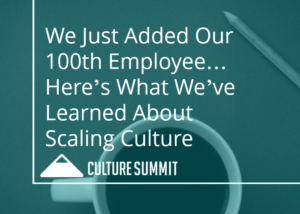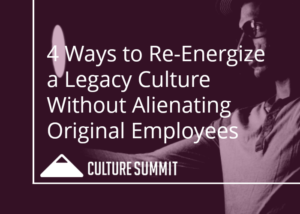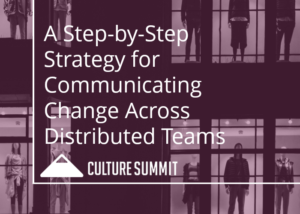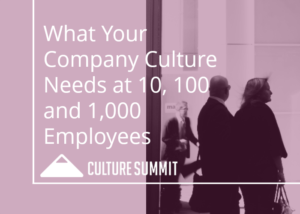How We Culture with Helen Russell, Chief People Officer at Atlassian
Are you gearing up for this year’s Culture Summit? Let us help you get in the mood by introducing you to this year’s Keynote Speaker, Helen Russell, chief people officer (CPO) of Atlassian.

As CPO, Helen has global responsibility for the attraction, engagement, development, and experience of Atlassian’s most important asset – its people. She champions Atlassian’s mission: ‘to unleash the potential of every team,’ playing a critical role in enabling the company ‘to be the ultimate team.’ With a growing employee base, Helen enables Atlassian to scale, while retaining the very elements that have made the company so successful to date.
We plugged in with Helen last week to interview her about what’s on her mind, what’s new inside the Atlassian culture, and more!
Name: Helen Russell
Location: San Francisco Bay
Position: Chief People Officer at Atlassian
What attracted you to Atlassian? Do you think the culture is an intentional company attribute that’s the same for other employers, or something unique to you?
Definitely the values and the culture. The culture is set by the tone at the top. Our founders are authentic, straight-shooting Australians. When I came to interview with them, I felt this was a place where I could be myself. It was a heavily relational interview process where they were trying to make sure there was a personal fit first, and after that, they dug in to ensure I had the right HR skills and experience.
There are a lot of companies now with strong cultures and who put a similar emphasis on culture, so I don’t want to say we’ve mastered this, but I think it’s something we hold as extremely important and believe it to be a living, breathing thing. We have a screening process to make sure values-fit is really high.
What initially attracted you to the HR space?
I never considered a career in HR! I was growing up in the recruiting world and saw myself on the sales side of recruiting. At the same time, I was very focused on building relationships getting candidates to trust that I had their best interests at heart, finding them the right fit in terms of company.
I was running recruiting from Europe, and I’d shortlisted three HR leader candidates for the Head of HR role for our European business. Our CHRO was over from the US to interview the candidates and when she and I went out for dinner I asked how the interviews went – I felt good about the candidates! My heart sank when she shared that she didn’t want to hire any of them. I asked, “Why? What didn’t work for you?” and she said, “Because I want you to do it!”
What she wanted to leverage was the trust I’d built with the executive team, and that was more important than my having 10 years of HR experience behind me. She was a huge advocate for me, and pushed me outside of my comfort zone, including pulling me to the U.S. and providing me with the opportunity to assume her role when she went out on maternity leave.
How has that skill evolved throughout your career?
I would say the secret weapon of any recruiter is the ability to really assess a candidate’s potential and fit for the environment they’re coming into. That has proven to be hugely helpful in a talent development scenario as well.
I’m constantly looking for opportunities for people to come in and take new roles, which has benefited my team. I can just spot something in their ability that they may not even recognize in themselves, and push them to help them grow.
There’s an element of competitiveness about the role of a recruiter too, so I bring that to HR as well. I don’t want to lose! I don’t want to fall behind my peers. And there’s a level of really wanting my team to achieve and wanting the function to feel like it’s winning.
Look, it’s really difficult in this function! We don’t get recognition and awards, like, “Hey! Great job hiring that person!” As HR leaders, it’s incumbent on us to inspire and celebrate the team as a whole.
If you couldn’t work in the HR space, what would you be doing?
I would be in some kind of investigative role. I have this talent inherited from my mum where I have the ability to spot things other people don’t notice. I’ve just always got my radar up. So, I’d be doing something for the FBI or CIA that would allow me to leverage that ability.
What are you reading, online or off, that you recommend?
Atlassian was quoted in John Wood and Amalia McGibbon’s Purpose, Incorporated: Turning Cause Into Your Competitive Advantage, and I’m reading that. I’m very interested in anything about purpose and fulfillment. We spend so much time at work, and this whole “work-life balance” notion – where we used to believe they are two separate things that you try to make work in harmony – I just don’t believe they’re separate.
I grew up in a generation in which for most of my career I was one person at work, and I was a different person at home. But here, I observe in my team that they’re the same people at work and at home. I’ve been learning from my team that it’s okay to talk about family things I would otherwise only talk to friends about.
It’s as much about bettering myself as it is about learning how we can bring this more overtly to Atlassian and build that notion of belonging. How can people best show up so that they feel they truly belong in this environment?
How do you prefer to read/consume information?
It’s a combination. In addition to reading, I like to walk to work and listen to a lot of Audible audiobooks. I’m consuming on the journey in and home from work. It’s usually business content on the way in, and lighter stuff on the way home.
I consume most things online. I have a bookmark called “articles,” and anything interesting I drop in there. Every Friday, I calendar in time just to think and catch up – I schedule it to prevent anything else from cutting in. There’s just something about a Friday where there’s a level of calm that’s different.
What’s your technology of choice?
The phone is rarely picked up here – everything is video conference, in terms of communication.
I run my life on Trello. All my content from 1:1, team meetings go into Trello, and we’re even using it to develop career ladders. It’s such a simple tool. We acquired Trello last year, and we are embracing the heck out of this product. We’re also huge consumers of Confluence. It’s a major product for us that has driven a very heavy blogging culture. People will blog about anything and everything here, from living with domestic violence to being kind at work.
When we were a part of the Great Places to Work survey, the interviewers told us that our trust scores were one of the highest they’d ever seen in any company. I think that speaks to the fact that our employees can disclose things at work and feel safe doing so. Especially with the #MeToo movement strong and growing, you want to ensure that if employees sense the slightest whiff of anything, they are going to be heard, and we take it seriously.
What does your workspace look like?
It’s an evolving question. Our workspace is very open plan, and we have lots of collaboration spaces. As a part of my role, I also look after facilities and the workplace experience side of the house. I’ve just made an offer to someone to run that team, and the reason I got really excited about this hire is that he’s coming from the retail space.
Retail spaces are all about the customer and of course about making money, so he thinks about space in a very different way than if he was coming from the corporate world. There are a lot of great workspaces in Silicon Valley, where you say, “Wow, this feels awesome!” so I am excited about his coming in and looking at our spaces through a different lens in support of creating workspaces that will help unleash the potential of our teams.
We also want to ask the question, “And how does that look and feel for remote workers?” When you don’t have the luxury of all being in the same location – especially with the acquisition of our Trello team, where more than half our Trellists are remote – we are asking, “How do we make someone sitting in Idaho feel just as much a part of a team?”
How do you define culture? Do you think there is or should be a universal definition?
I define culture as the norms and behaviors expected of a person in a particular environment. Different people interpret it differently. Some people see values and culture as synonymous, but they aren’t. Culture is how you typically behave and how, when others come in and observe how that behavior manifests itself, they copy it to fit in.
What’s the best culture advice you’ve ever received?
My mentors would say, “culture is as culture does,” meaning that how you choose to show up every day is what’s defining the culture and setting the tone.
If I think back to my Siebel days when I had two little babies… I started to come home in the evenings, put my little ones to bed, and work in the evenings. I was often finishing email and returning calls around 10PM. But then I noticed that the majority of my team had also started to get online at 9 and 10 at night. I was inadvertently modeling that I expected that behavior. I had to sit team members down and explain that just because this was working for me at this time, it’s not what I expected from them. As leaders, we cannot underestimate the signals we send.
If you had to pick one culture-enhancing practice or “tactic” most companies could or should implement, what would it be?
I have to go with something we just started to do in the spirit of bringing your true self to work: at the beginning of each executive meeting, everyone has the mic for two minutes, and we each have a minute to say what’s top of mind from a personal perspective and a minute on what’s top of mind from a business perspective.
Since we started this practice, it is unbelievable what I’ve discovered about my peers. You just have no clue what’s going on in your colleague’s lives until that moment when they disclose things. It evokes a completely different level of empathy and connection. Having those moments to just situate what’s going on with colleagues enables us all to be more trusting, and to interact from a more humane and empathetic point of view.
If you could impart one universal understanding about company culture to every senior executive in the world, what would it be?
Every single thing you do and say contributes in some small way to your company’s culture and tone. I’m sure that knowing that would make executives check themselves ahead of responding in a certain way, being distracted looking at their phones, or other little things that feel so insignificant but have an incredible effect on the people around them.
Want to hear more from Helen? Start with her 2017 interview on 805Connect, “Building High Impact Teams,” and don’t miss her 2018 Keynote at The Culture Summit.

